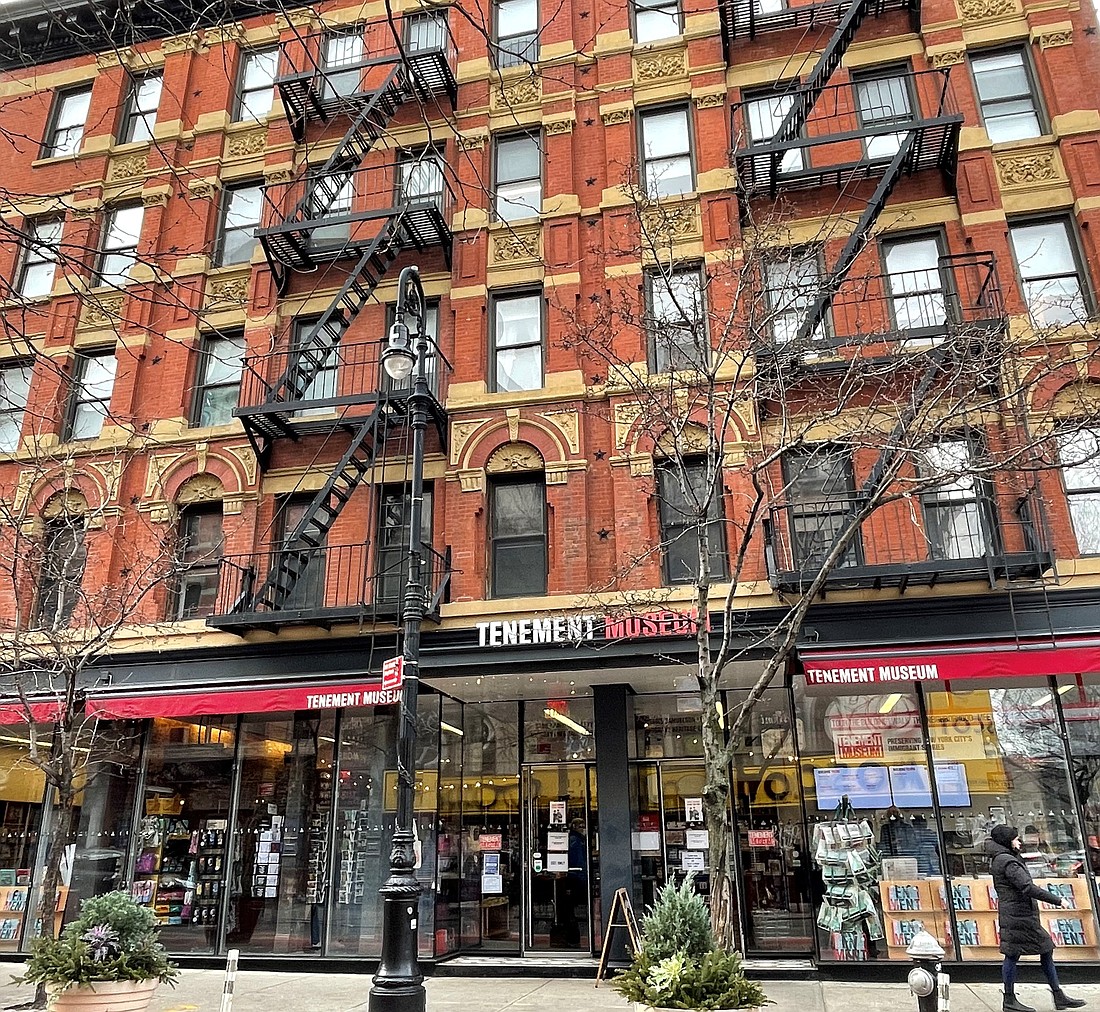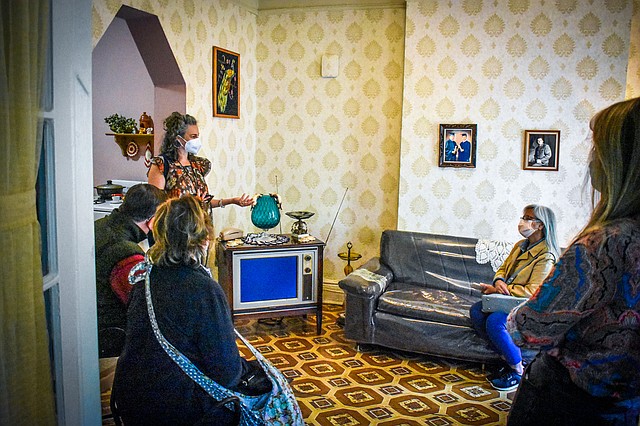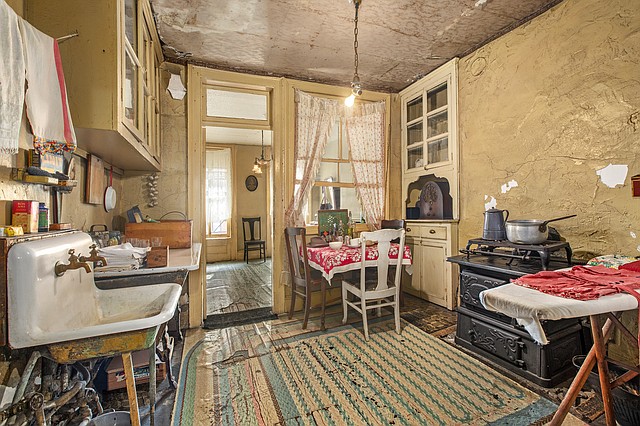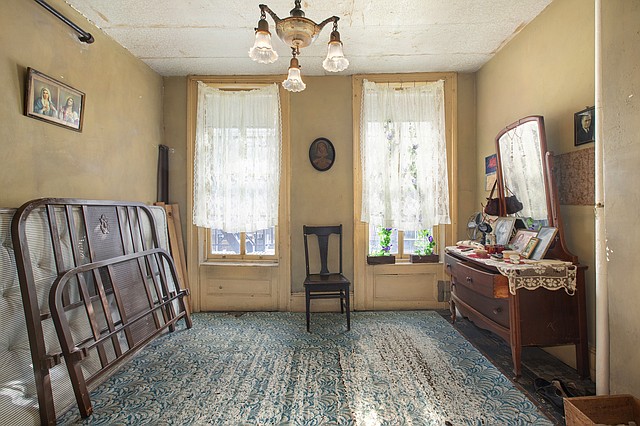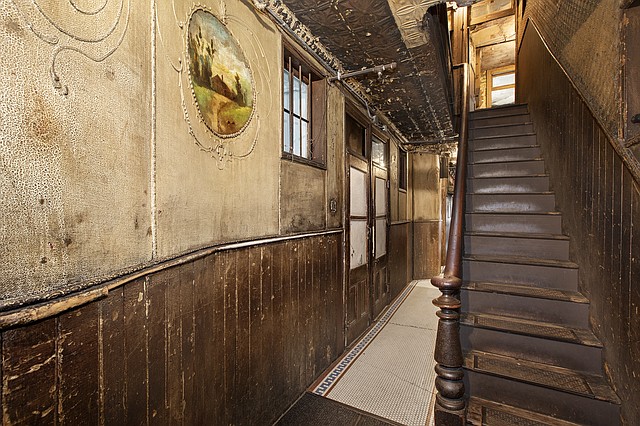Immigrant history comes alive at the Tenement Museum
April 4, 2022 at 6:00 a.m.
On my recent trip to the Big Apple, I finally got my wish.
Today, visitors can hear these stories through guided tours of two historic buildings at 97 and 103 Orchard Street and the surrounding Lower East Side neighborhood. Such tours are essentially a time capsule that sheds light on aspects of identity, urban development, public policy, architecture and other themes. They’re also a reminder of the challenges and hurdles faced by new migrants and refugees to America, not only then, but now. And finally, they are strong threads that connect us to one another, with the realization that as human beings, we share many commonalities.
I chose the latter tour because I was most interested in the time period. Prior to entering the Baldizzi’s apartment, our guide gave the group a brief history of the building, which had eighteen units, and was built in 1863 by a German immigrant. There was a need in the area for housing for working class and middle-class families. The neighborhood was called “Little German Land,” due to the number of German immigrants who settled there. By 1910, the neighborhood was transformed by Jewish immigrants and then later, by Italians.
The building was occupied until 1935 when the landlord closed it. A city code regarding fire safety necessitated the replacement of staircases from wood to metal. Rather than making the legally mandated improvements, the landlord refused and shut it down, evicting everyone living there at the time.
Walking inside, our guide pointed out the building’s original tin-plated ceilings and staircase. In the Baldizzi’s three-room apartment (bedroom, kitchen and parlor), you could see different layers of wallpaper – twenty in total - that were covered with paint, now chipping away. The linoleum flooring in the kitchen had a design that made it look like a rug. On the shelves was a container of Bon Ami, a common household cleanser, and a box of Linit, laundry starch. Underneath was the kitchen sink, which served a multitude of purposes. It was not only where dishes and clothes were washed, but where the kids took cold-water sponge baths each morning and had their weekly tepid baths. A coin operated gas meter was mounted on the wall. An apartment such as this one typically rented for $20-25 a month.
During our tour, we saw a video that was made when the Baldizzi daughter, Josephine, visited the apartment for the first time since she had lived there as a child. She remembered the place as being dimly lit, barely furnished and cold. But she noted that her mother decorated it with curtains, coverlets for the beds and skirts across the shelving that her father built into the walls. They also grew flowers at the window.
The family experienced serious economic hardships due to the Great Depression. The unemployment rate in New York City was a steep sixty percent. Adolpho, who had resorted to being a handyman, was often jobless and depressed. Rosario worked in a garment factory and took over head of household duties. She was at constant risk of being let go from her job, though, because she was essentially an “illegal.”
The Baldizzis needed to rely on social programs and their church to help them get through these rough times. President Roosevelt’s Home Relief Program for immigrants and noncitizens provided some assistance and in the Baldizzi household the President was regarded as “Saint Roosevelt.”
After they were evicted, the family moved a few blocks west and then eventually to Brooklyn, where Adolpho began working at a shipyard. Both parents earned their citizenship and life improved for the couple and their children.
Josephine, the last of the Baldizzis, passed away in 1998.
